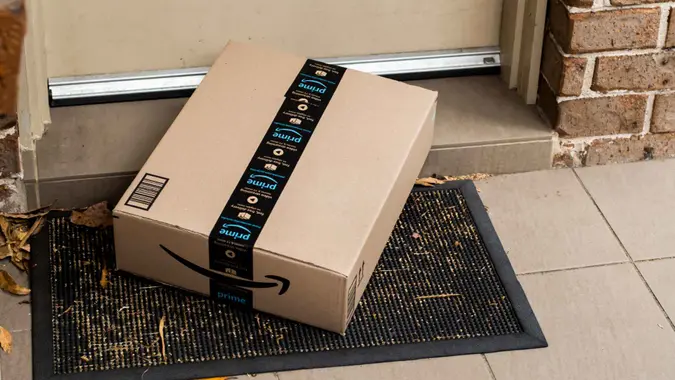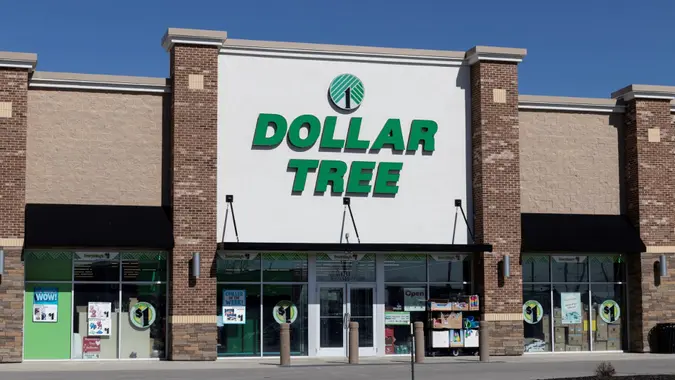Advertiser Disclosure
GOBankingRates works with many financial advertisers to showcase their products and services to our audiences. These brands compensate us to advertise their products in ads across our site. This compensation may impact how and where products appear on this site. We are not a comparison-tool and these offers do not represent all available deposit, investment, loan or credit products.
Save Money the Healthy Way: 8 Diet Tips To Improve Your Well-Being and Wallet
 Written by
David Nadelle
Written by
David Nadelle
 Edited by
Nicholas Morine
Edited by
Nicholas Morine

Commitment to Our Readers
GOBankingRates' editorial team is committed to bringing you unbiased reviews and information. We use data-driven methodologies to evaluate financial products and services - our reviews and ratings are not influenced by advertisers. You can read more about our editorial guidelines and our products and services review methodology.

20 YearsHelping You Live Richer

Reviewed by Experts

Trusted by Millions of Readers
Unfortunately, eating healthier often runs counter to cutting your grocery spending. Food prices are still stubbornly high, and a diet rich in fruits, vegetables and healthy proteins inevitably costs more than one with calorie-dense carbs and processed meats.
So, how can you get back to better health without breaking the bank? By being conscientious with what you buy and what you consume. Here are eight dieting tips for eating healthy on a budget.
1. Water, Water, Water!
That boring, flavorless liquid is the closest thing living creatures have to a cure-all. Water allows the body to perform a near-endless list of important functions that maintain health, including improving circulation and mental performance.
And talk about cheap! Although you’ll pay pennies for municipal drinking and bottled water, most liquids and food sources have trace-to-significant amounts of H2O. While it is possible to drink too much water, experts recommend four to eight cups a day.
2. Plan Your Meals
Efficiency is key to a healthier and cheaper diet. Meal prepping can become an organizational obsession, but simply planning healthy meals and stretching your money for the week can help keep you on track — and save you potentially hundreds of dollars a month.
As Healthline suggested: “Make sure to also scan your fridge and cabinets to see what you already have. You may have foods hidden in the back that can be used, or you may want to plan your meals around foods you need to use before they expire.”
3. Make a Shopping List …and Stick to It!
Sticking to a shopping list can make your trips to the grocery store fast and easy, eliminate impulse buys and reduce your food wastage. You should be only shopping for the items you need and you’ve listed. A full 85% of participants in Ramsey Solutions’ National Study of Millionaires — those who can afford to spend more freely — rely on a grocery list to some degree.
Additionally, don’t shop when you’re hungry. There’s a tendency for people who haven’t eaten to choose more high-calorie foods when they’re supermarket strolling. Shoppers who are hungry and don’t have a list have a tendency to steer their carts toward the junk food aisle.
4. Buy Generic Products Over Name Brands
You may be being conned. While brand name products are pushed into your psyche through every available media source, generic groceries are close to the same quality as their popular brand counterparts — but cost about 40% less. In fact, many products are made by the more expensive competition brands and disguised as “phantom brands,” per The Conversation.
5. It’s Okay To Buy Canned or Frozen
There’s no way around it: Healthy eating means including fruits and vegetables — essential for overall nutrition and to support a strong immune system — in your daily diet. Local produce that’s in season is preferable to out-of-season options, but perishables have short shelf lives and can be expensive, too.
You can rely on canned and frozen staples to last longer and push your dollar further than fresh options. However, make sure to read labels diligently (which you should be doing anyway). You’ll lose little nutritionally if you stay away from added sugar and salt.
6. Eat Less Often?
Diet fads come and go and certain regimes work for certain people. One trend that never goes out of style is eating less. It’ll save you money, but is cutting out meals healthy? Everyone is different, so make sure to research any food slashing diet.
For example, nutrition expert Dr. Eric Berg promotes a one meal a day diet (OMAD) as the path to better physical and financial health. This fasting strategy involves eating the number of calories you need for an entire day during a one-hour eating window and spending the remaining 23 hours abstaining from food. Berg believes you can save at least $600 a month using the OMAD method, while also bringing about a host of health benefits.
7. Grow Your Own Food
Growing your own fruit and veg can be a cost effective way of getting healthy. While it pays to know what you’re doing, even a novice gardener with a small patch can achieve the twin goals of getting healthy and saving cash.
Aside from some up-front costs, you could save over $600 a year by growing fresh produce, depending on the size of your operation, per Money.
8. Couponing Is King!
Over the past few years, the term “extreme couponing” has entered our retail lexicon. But you don’t have to go overboard to save serious money and stay healthy using discounts. According to a CouponFollow study, the average U.S. household could save $1,465 per year using coupons.
There’s so much material available to thrifty shoppers and deals to be had cutting paper coupons and using coupon collector apps. Start with The Krazy Coupon Lady site, which has a wealth of resources that will help you save time and money. You’ll be surprised how much you can save by regularly using coupons at the store and online if you stick to what you’ll consume.
Share This Article:




You May Also Like



10 Luxurious Winter Clothing Items You Can Find at Nordstrom Rack for Less
December 02, 2025
5 min Read

18 Things To Buy at Dollar Tree This Winter If You Live on Social Security
December 05, 2025
5 min Read


I Asked ChatGPT Which Holiday Splurges Are Worth It -- Here's What It Said
December 08, 2025
5 min Read

7 Must-Know Holiday Shopping Tips To Save You Money Despite the Tariffs
December 08, 2025
5 min Read



How Millennials' Risky Buying Behavior Leads to Higher Cyber Losses This Season
December 08, 2025
5 min Read


I Asked ChatGPT Which Hot Gifts Today Could Be Worth Thousands in 10 Years
December 08, 2025
5 min Read


Here's Why 'Financial Discipline' Won't Solve Your Holiday Money Stress -- and What Will
December 08, 2025
5 min Read

Which Is Really Cheaper -- Buying Christmas Presents Early or Last-Minute Shopping? We Do the Math
December 08, 2025
5 min Read

Best Ways To Save Your Money
Make your money work for you
Get the latest news on investing, money, and more with our free newsletter.
By subscribing, you agree to our Terms of Use and Privacy Policy. Unsubscribe at any time.


Thanks!
You're now subscribed to our newsletter.
Check your inbox for more details.



Sending you timely financial stories that you can bank on.
Sign up for our daily newsletter for the latest financial news and trending topics.
For our full Privacy Policy, click here.
Looks like you're using an adblocker
Please disable your adblocker to enjoy the optimal web experience and access the quality content you appreciate from GOBankingRates.
- AdBlock / uBlock / Brave
- Click the ad blocker extension icon to the right of the address bar
- Disable on this site
- Refresh the page
- Firefox / Edge / DuckDuckGo
- Click on the icon to the left of the address bar
- Disable Tracking Protection
- Refresh the page
- Ghostery
- Click the blue ghost icon to the right of the address bar
- Disable Ad-Blocking, Anti-Tracking, and Never-Consent
- Refresh the page


